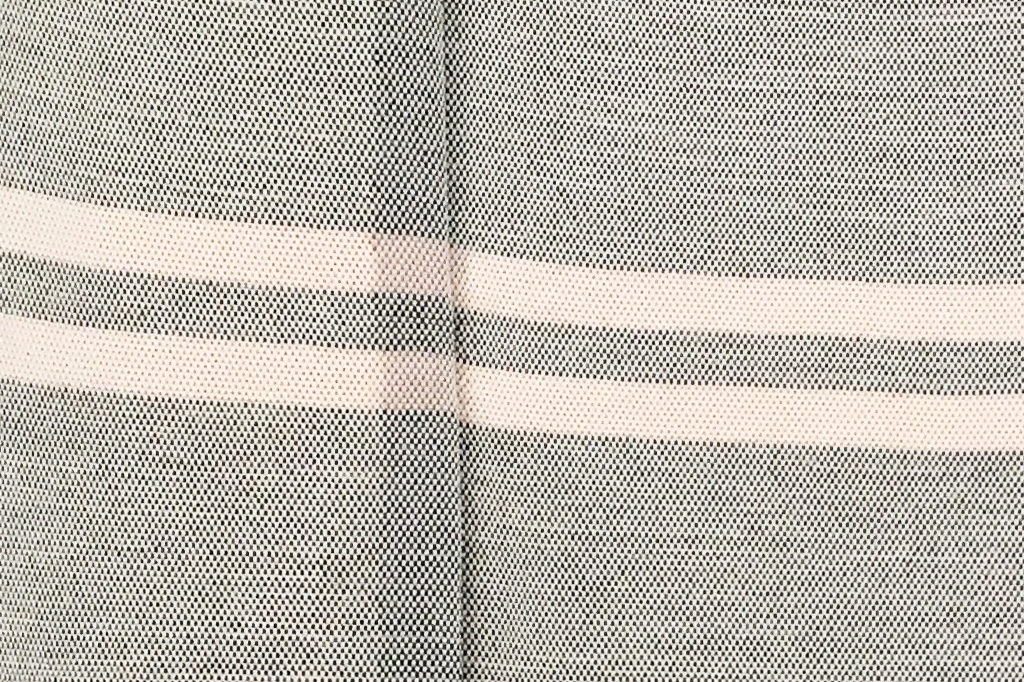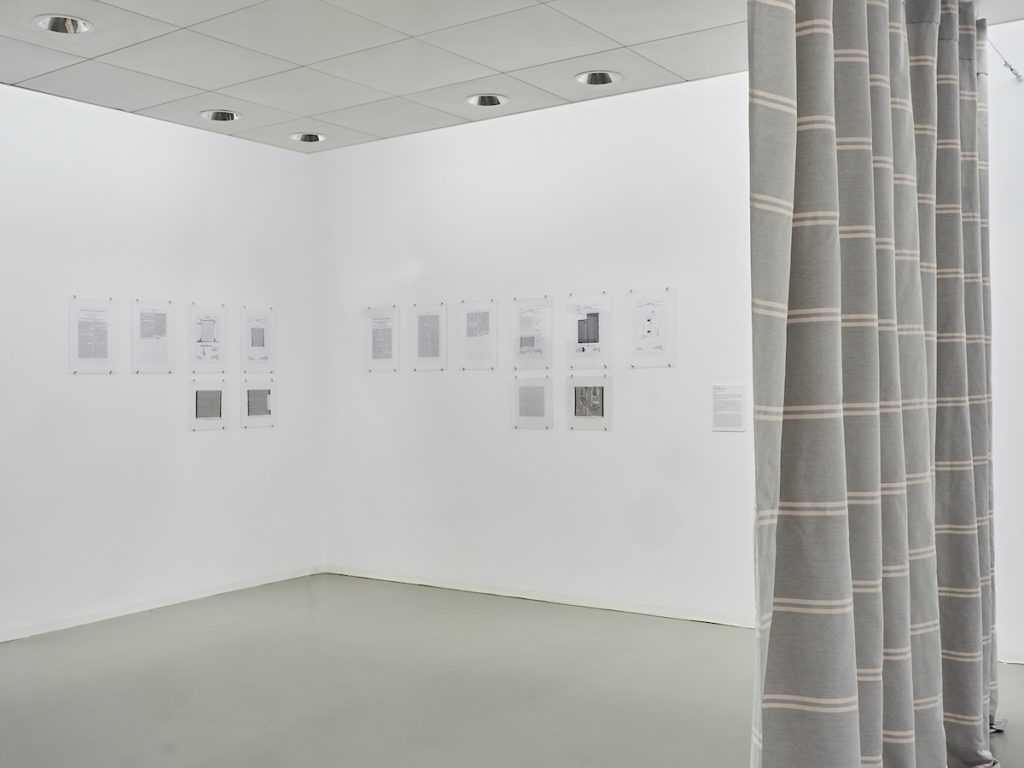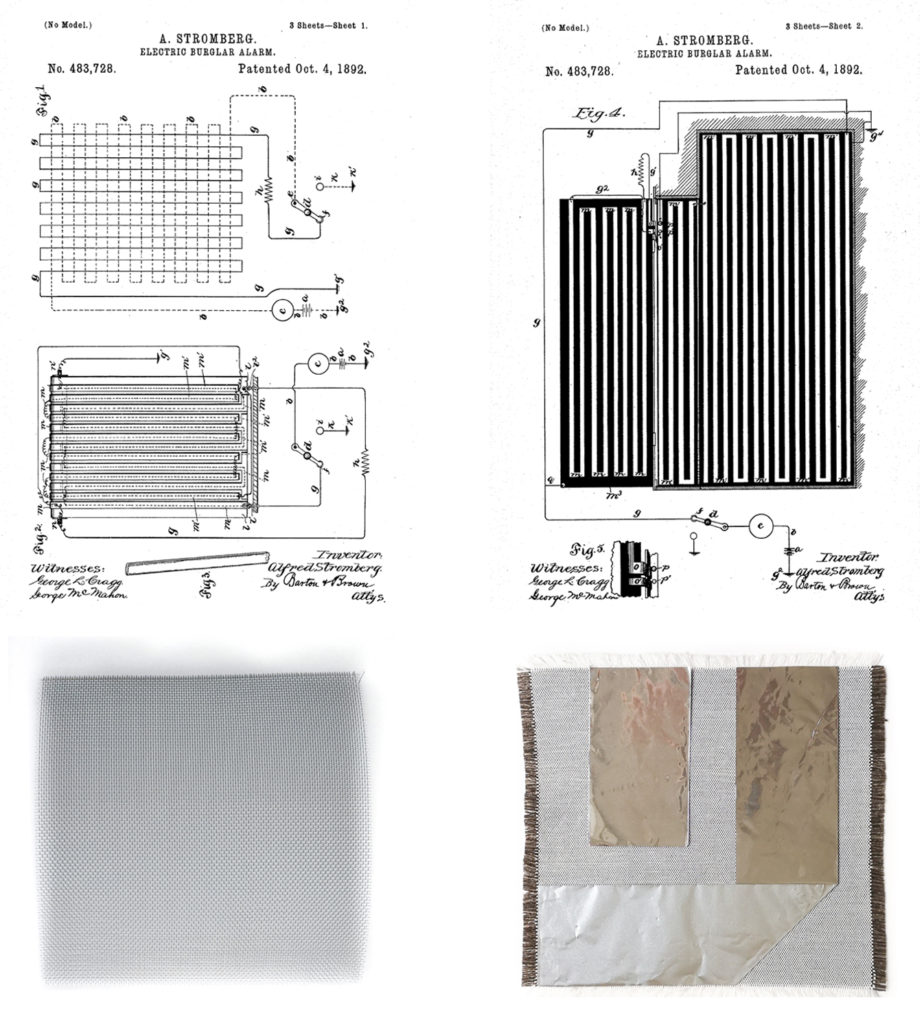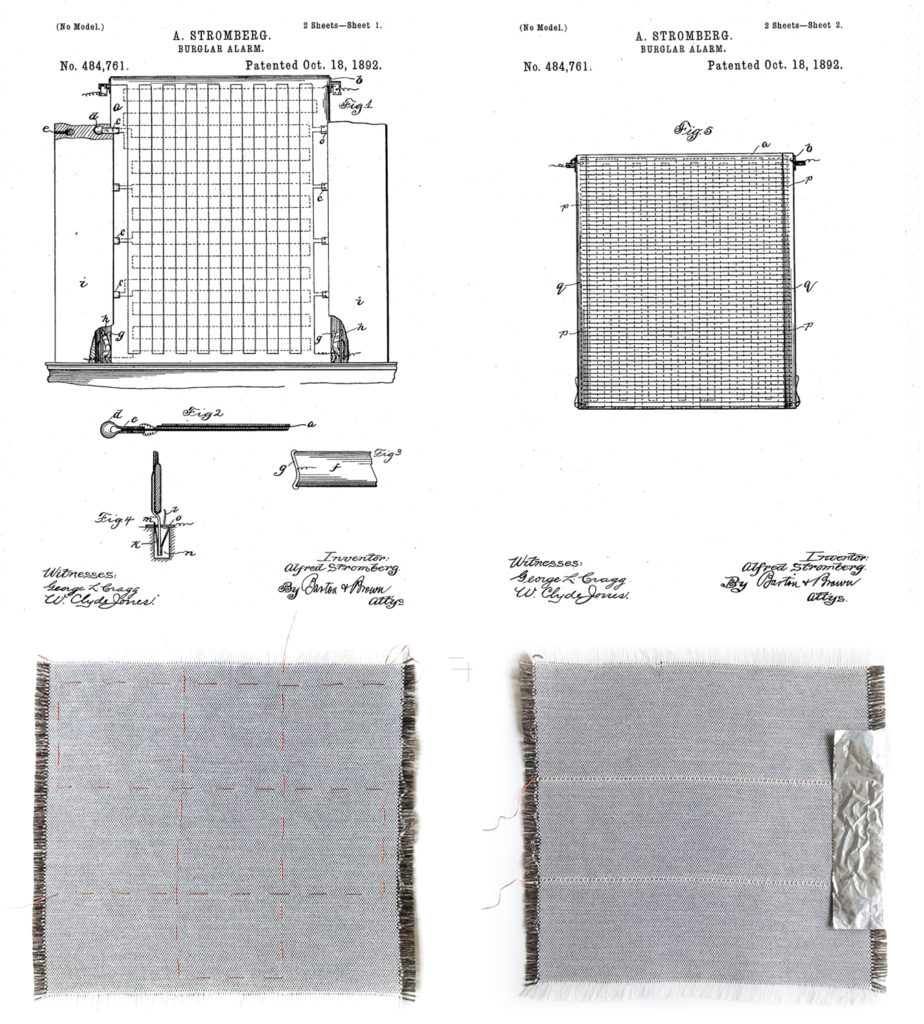
Burglar Alarm
Burglar Alarm is an installation based on two patents formulated in the 1890s. They propose a curtain as an alarm system, suggesting, among others, a metal thread as a circuit conductor woven throughout the fabric – an early formulation of smart textile potentials. The installation shows the patents, material samples of the circuit solutions they propose, and a recreation of the main functionality: a curtain producing an alarm when opened unexpectedly.
The installation aims at a critical and historical perspective on smart textiles, providing viewers with a tangible provocation to current narratives of innovation. It presents and performs design considerations of interactive systems from more than a hundred years ago, contextualizing smart and electronic textiles as a historical technology. The work is part of an ongoing material inquiry into metal threads, and their historic and present use in aesthetic and technical objects.


The installation shows prints of two patents by Alfred Stromberg, “Electric Burglar-Alarm” filed March 15 1892 and “Burglar-Alarm” filed July 19 1892. They describe mechanisms for making an alarm from a flexible cover and a current interpretation of this historical model. Stromberg, the inventor, described both, the circuit to trigger the alarm, and materials and techniques that he considered suitable to innovate burglary protection: the use of “widespread” protecting screens, the use of tin-foil to mount a circuit on a flexible body, and the sewing or weaving of metal threads into the fabrics of a curtain, instead of placing it upon the outside.
In terms of rhetoric and technology, these patents are reminiscent of contemporary eTextile projects; the recreation of the curtain materializes these historic descriptions as a contemporary product. Metal threads are directly woven into the fabric, they at the same time define the pattern and are exploited for their electric qualities. The circuit transforming the textile into an alarm is based on the descriptions in the patent. Instead of the structure described in the patent, connecting the curtain to a frame on all sides, the installation shows a free handing curtain hung from the ceiling, a commonly recognizable artefact of interior design. When opened, an electric bell sounds, as described in the patent. The ensemble of textual descriptions and tactile replicas contextualizes electronic textiles as historical technology. It is an invitation to engage with this specific idea from more than 100 years ago and to reflect its contemporary standing, as well as possible and desirable contemporary eTextile production and products.
The curtain in the installation consists of two panels, each around 1,80-meter-wide and 3,50 meter long. They are woven on an industrial loom using a rib weave. White, flame-retarding threads are used in the warp. The weft consists of dark grey flame-retarding threads and copper threads (Karl Grim High Flex 7×1), resulting in the striped, functional pattern. Hang as a curtain it can be opened in the middle. To enforce the closing, panels are held together in the middle with small magnets integrated into the edge of the fabric. This makes sure the copper threads contact well when closed across the whole width and height of the curtain and that the curtain is easy to open. The inclusion of magnets varies from the original patent. The ends of the copper threads connect to a relay-controlled circuit, sounding an electric bell in case anyone disturbs it.



Burglar Alarm patented by Alfred Stromberg in 1892 and swatches of his descriptions.

Installation view of the Burglar Alarm in the exhibition „Textile Techniken“, Galerie Hollenstein, Lustenau. Photo: Miro Kuzmanovic
–
Burglar Alarm, 2019
Patents: Alfred Stromberg, 1892
Material Samples
Woven Curtain
Custom Electronics
The curtain was produced in cooperation with Getzner Textil AG in Bludenz, AT.
–
Irene Posch. 2020. Burglar Alarm: More Than 100 Years of Smart Textiles. In Companion Publication of the 2020 ACM Designing Interactive Systems Conference (DIS’ 20 Companion). Association for Computing Machinery, New York, NY, USA, 473–476. DOI:https://doi.org/10.1145/3393914.3395847
Textile Techniken. November 16 – December 15 2019. Galerie Hollenstein, Lustenau, AT.